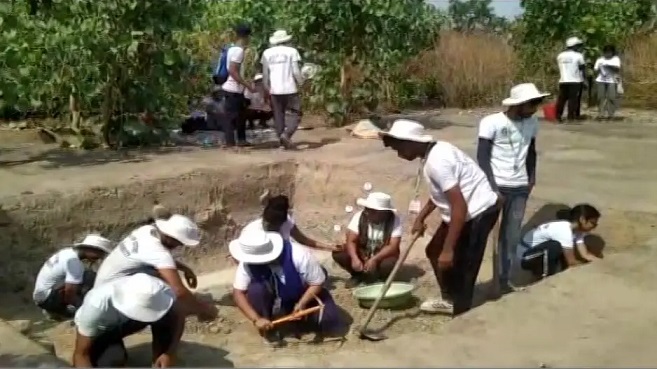At Asurgarh in Odisha’s Bargarh, Researchers Discover Ancient Relics; Check Details

Sambalpur: Researchers have discovered relics and artefacts believed to be from a 2,000-year-old civilisation at Asurgarh, an urban settlement site in Barpali in Odisha’s Bargarh district.
The researchers from the School of History of Gangadhar Meher University (GMU) in Sambalpur have discovered stone tools, rare coins, pottery, weapons, artefacts, ancient bricks and ceramics. The tools discovered were designed to hunt large wild animals.
The discovery will help in understanding migration and subsequent colonisation of this part of India, according to the researchers.
The excavation is being done by PG and PhD students under the supervision of Assistant Professor and director of the excavation, Atul Pradhan.
According to Pradhan, there are a number of ‘Asurgarhs’ in Western Odisha and Chhattisgarh, which are important early urban centres but which continue to remain unexplored. This is the first time an Asurgarh in Barpali area of Bargarh district is being excavated, he told TNIE recently.
In another finding reported by media in April this year, an advanced radiocarbon dating technique pushed back the period of the Asurgarh fort settlement in Odisha’s Kalahandi district to ninth century BC or the Iron Age, making it 2,500-2,600 years older than the Sisupalgarh fort and the state’s oldest fortified settlement.
Archaeologists, using the Accelerator Mass Spectrometry (AMS) radiocarbon technique, established that the Asurgarh fort settlement spanned over three cultural phases from ninth century BC to third-fourth century AD.
Earlier believed to be of the Mauryan period, archaeologists said the Asurgarh fort settlement actually dates back to the Iron Age, making it older than the Sisupalgarh fort, which dates back to fifth-sixth century BC.

Comments are closed.